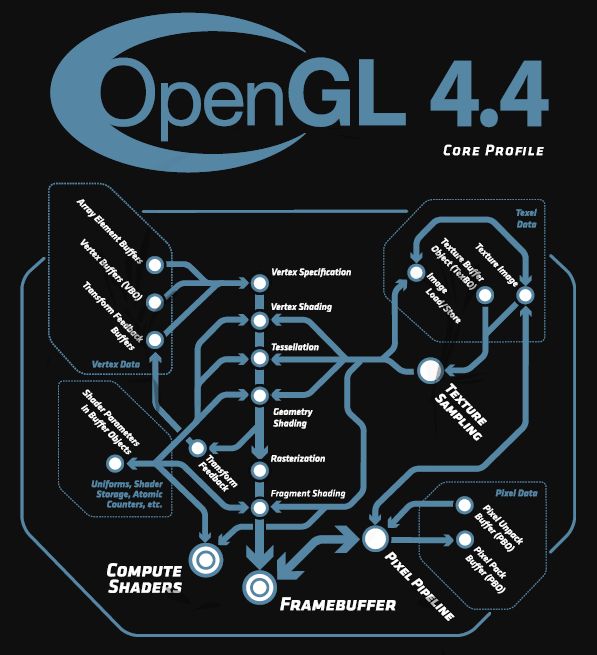


I recently started re-educating myself on OpenGL ES 2.0 in anticipation for a project I’m planning. I’ve done work with OpenGL ES 1.1 before, there are significant changes in 2.0. As many of you may know, the biggest difference between OpenGL ES 1.x and 2.0 is the “programmable pipeline.” In 1.x, the methods via which shading was performed was pre-determined – you provided various high-level information like light positions, etc., and the graphics engine took over from there. By having a fixed pipeline, the graphics drivers and the GPU could be made much simpler, which is (or was) appropriate for the lower-cost GPU’s in mobile devices. class PoolManager // manage AutoReleasePool stack.In OpenGL ES 2.0, those restrictions are gone, and you’re now allowed to do a whole variety of things in the graphics pipeline that you couldn’t do before.īut with great power comes great responsibility – if you use 2.0, you are completely responsible for defining some critical aspects of the pipeline by providing two “shaders,” each of which is a small (or not-so-small) program in and of itself. class AutoReleasePool // manage the reference count of pointer to object of type Ref. class Ref // Object, for reference counting. It consists of a well-defined subset of desktop OpenGL suitable for low-power devices, and provides a flexible and powerful interface between software and graphics acceleration hardware. Download for Windows 8 and 7 (64-bit) Download for Windows 10 (64-bit) Download for Windows 10 (64-bit) DCH Linux 418.52.18. OpenGL ES is a royalty-free, cross-platform API for rendering advanced 2D and 3D graphics on embedded and mobile systems - including consoles, phones, appliances and vehicles.

class Director // control the process of rendering. Opengl viewer for windows XP 32 bit Download opengl 1.0 for windows Opengl es 2.0 emulator free download Opengl es emulator 2.1 32 bit download Opengl es emulator 3.0 Programs for query opengl. class OpenGLView // Windows control and OpenGL ES Drawing Context. class AppDelegate // derived from Application. Class Application // application abstraction.


 0 kommentar(er)
0 kommentar(er)
